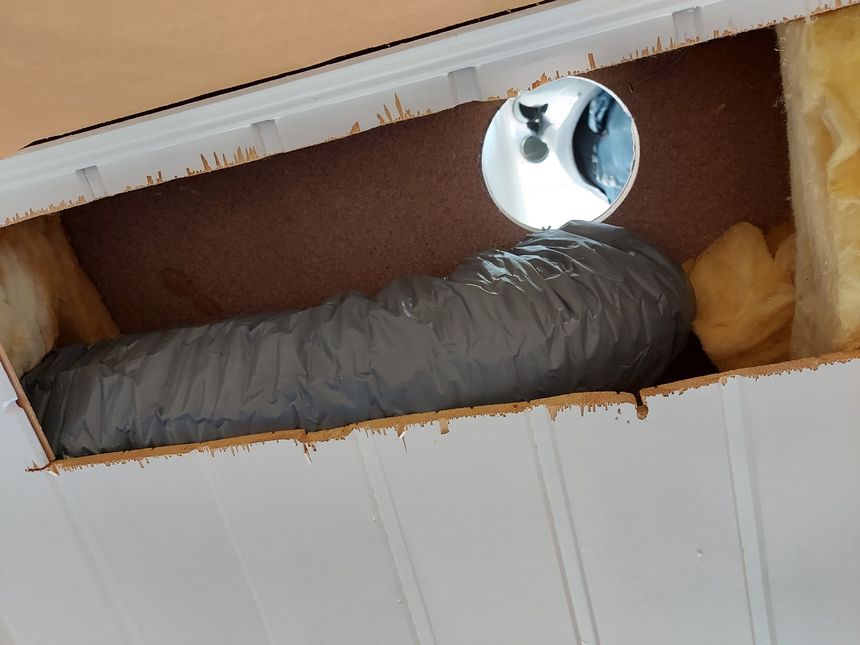We got balanced ventilation installed last year, and have been very happy with the system 🙂 But we quickly found that we needed to expand it into two more rooms — the 1st floor bathroom, used as the laundry room, and the play room, which will be a bedroom at some point.
Time to fix that 🙂
Table of contents
The plan
I spent a lot of time thinking, and measuring, trying to find the best way to get from the attic to the 1st floor with two 125mm (5") ducts. Obviously they needed to go through the 2nd floor — but I wanted them to waste as little space as possible in the 2nd floor den.
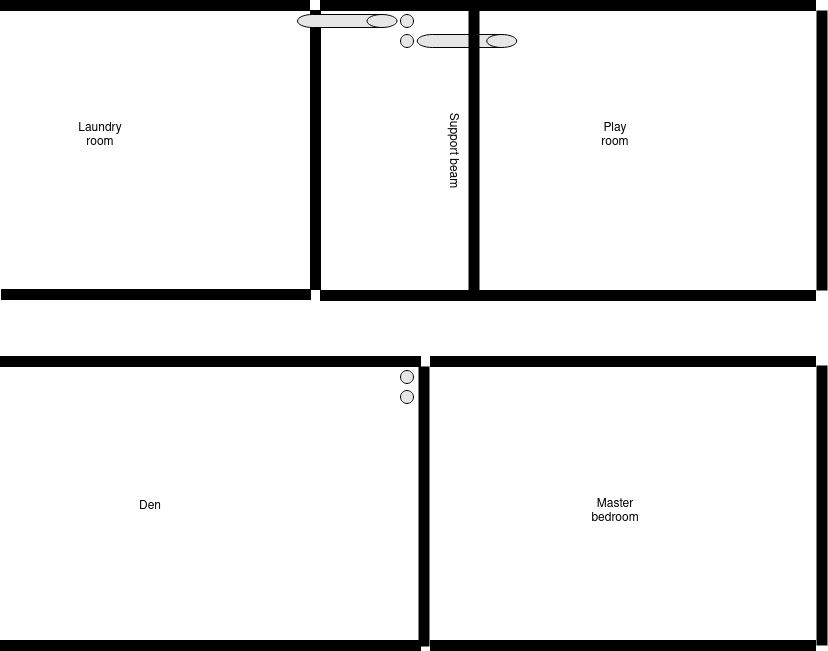
After a lot of measuring I made the sketch above. It shows the 1st (top) and 2nd floor (bottom), and how the rooms, walls, and support beam align. To minimize the wasted wall space in the 2nd floor den — we chose to place the ducts alongside the master bedroom wall.
This was also a good location on the 1st floor, as it was clear of the support beam in the play room, which will be an interior wall at some point.
During the installation; the contractor was able to fit the duct above the support beam in the play room. Placing the supply air vent inside what will be a future bedroom, completely hidden 👍
The ducts
Time to get the ducts installed. To be honest; this part makes me quite stressed out, so I stayed in the basement home office most of the time 😛
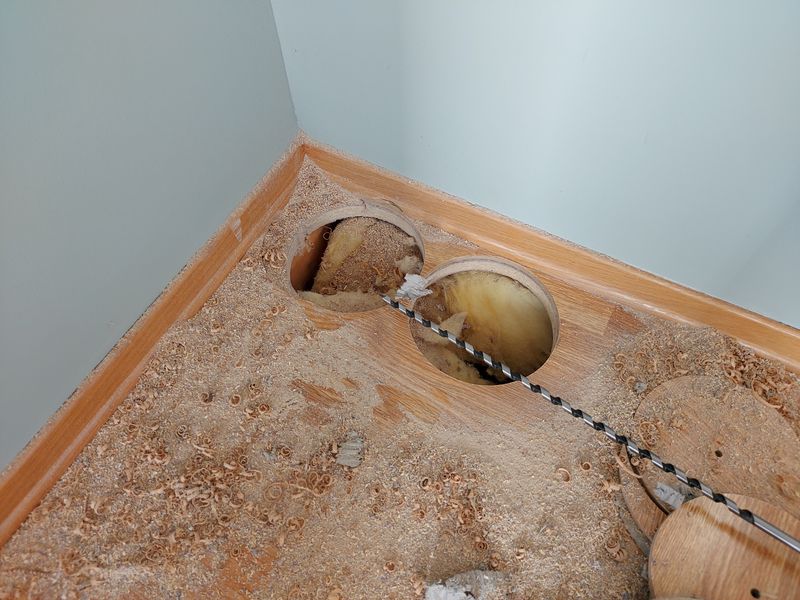
The contractor started by drilling two large holes in the floor of the 2nd floor den.
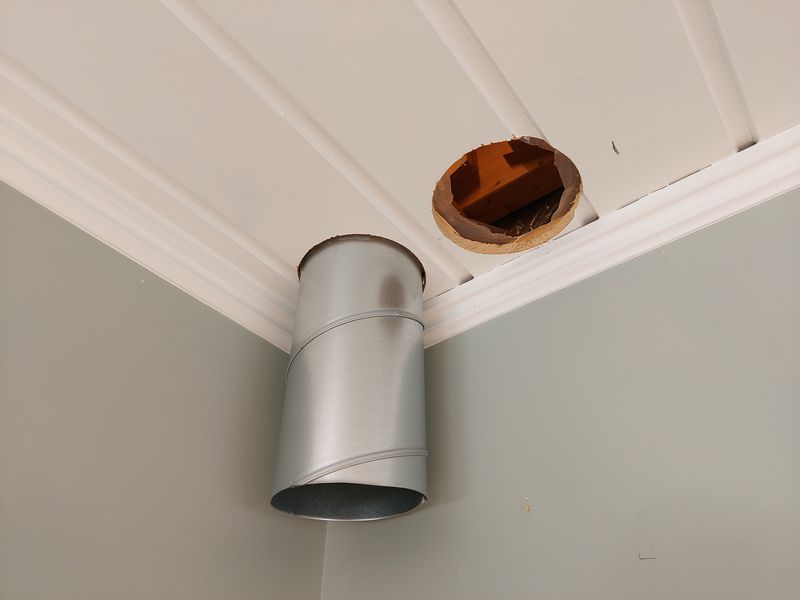
After confirming that nothing were interfering — they made two holes directly above, going into the attic.
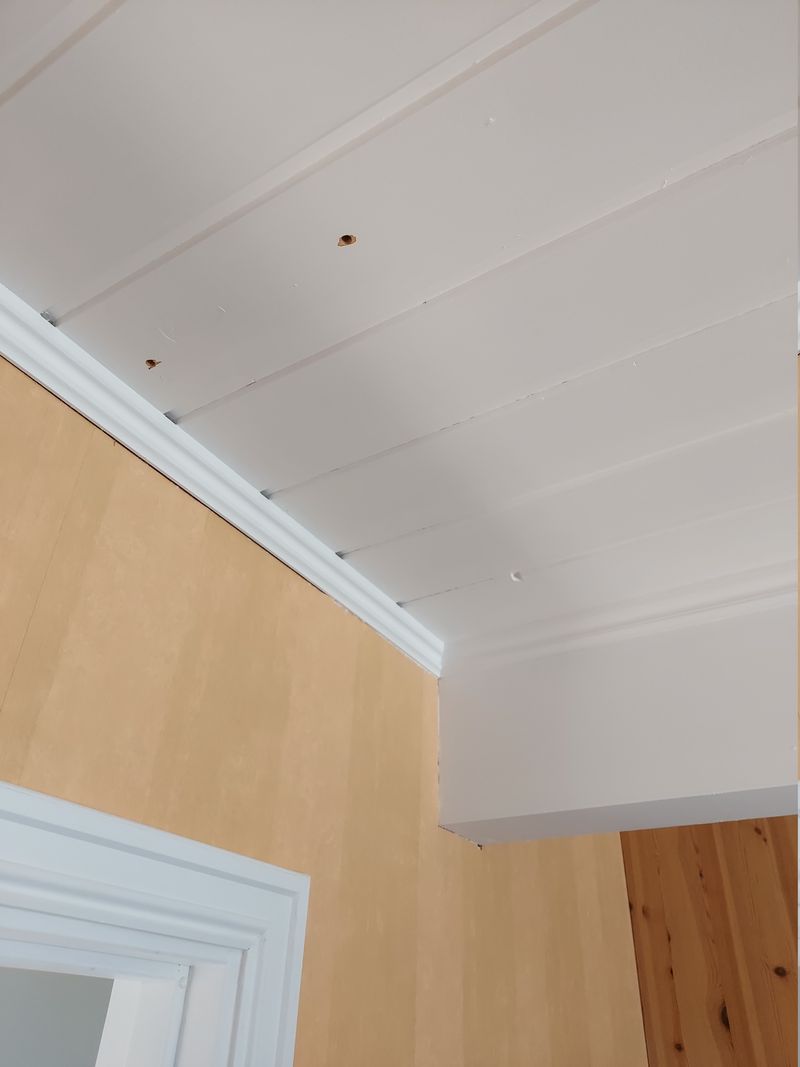
Two pilot holes in the 1st floor play room show where the ducts will come out.
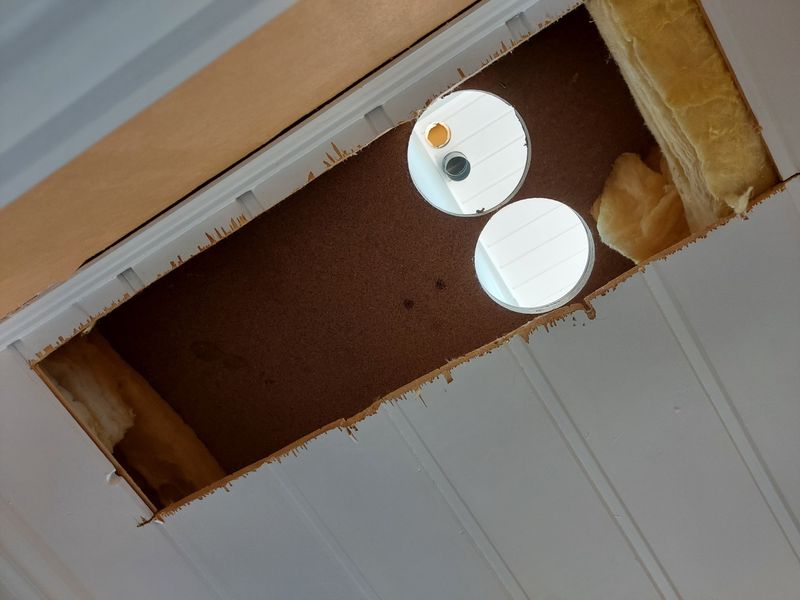
Instead of drilling two holes in the 1st floor ceiling; they cut out a section. This allowed them to install the noise trap for the supply air vent above the ceiling, and run it over the support beam 👍
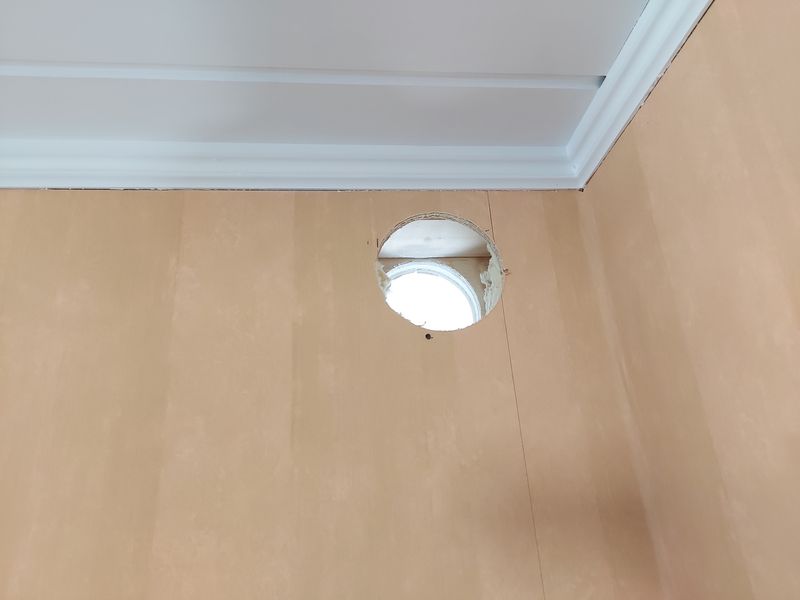
Next they made a hole through the play room wall…
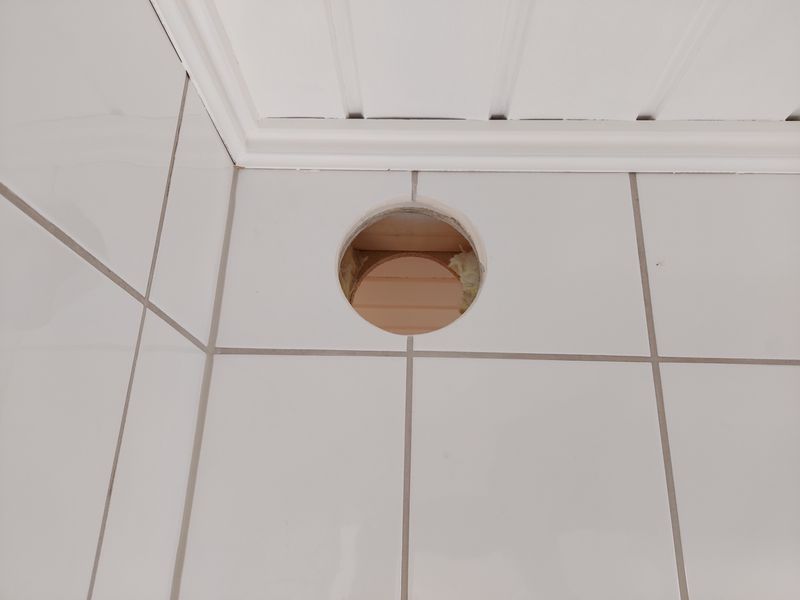
…into the laundry room.
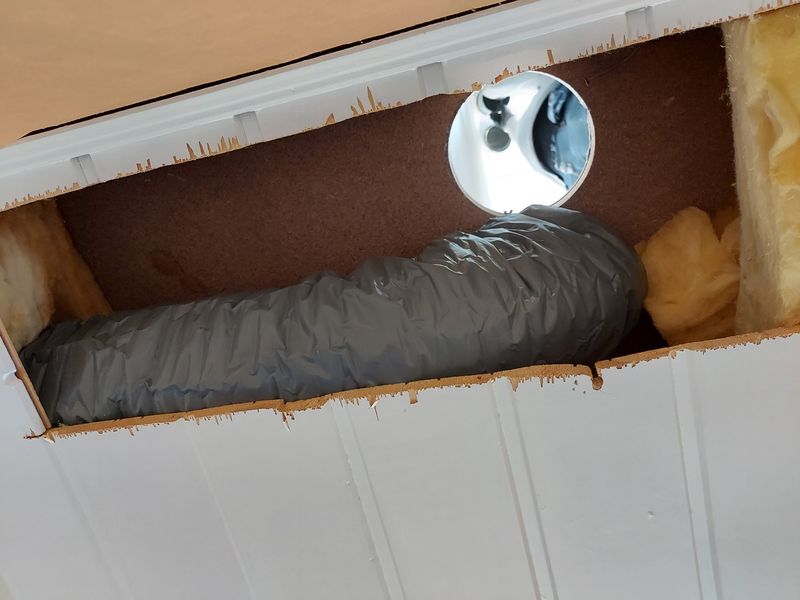
The noise trap was installed; above the ceiling, going to the supply air vent on the other side of the support beam.
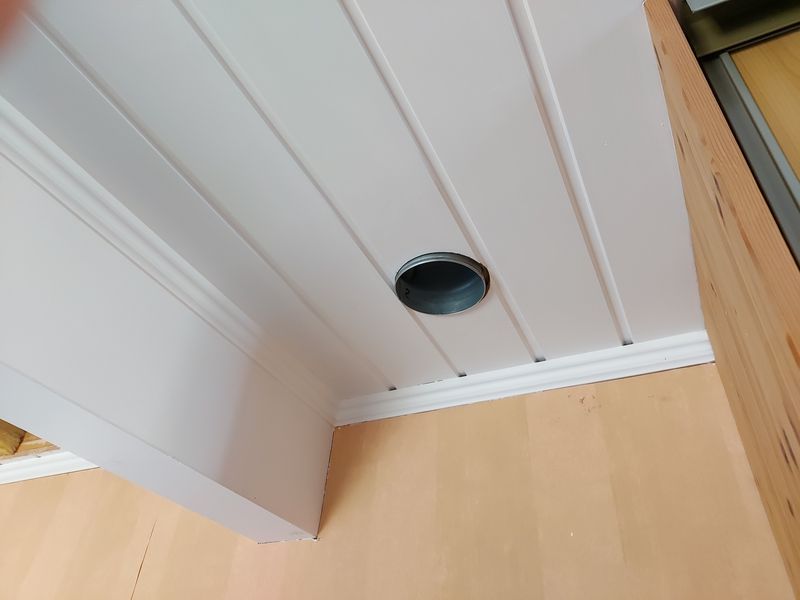
Supply air vent in the play room (future bedroom) ceiling.
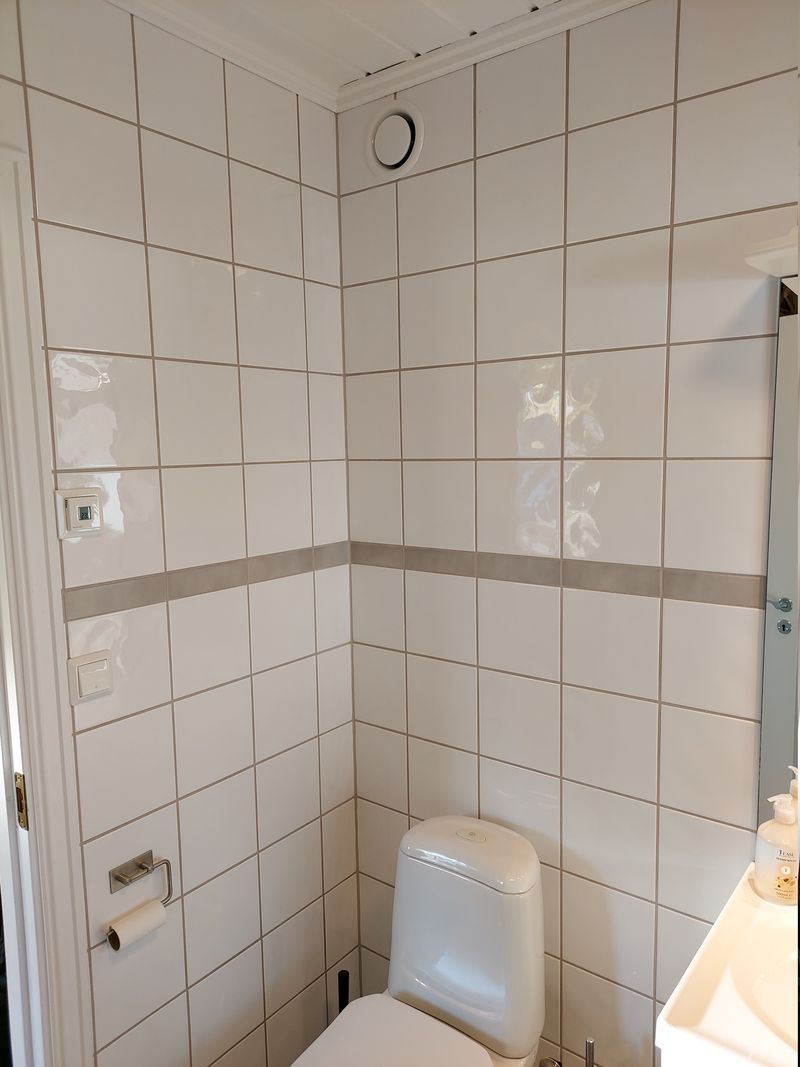
Exhaust vent installed in the laundry room wall.
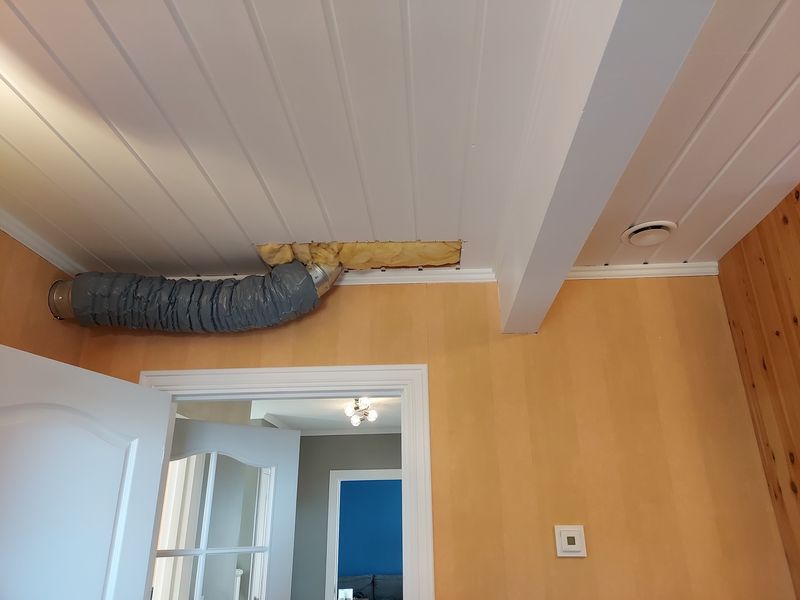
This is how it looks now in the 1st floor play room. With the noise trap for the laundry room exhaust visible, we will build a box to hide it and the opening in the ceiling.
The future interior wall will follow the support beam, so getting the supply air vent on the right side was important 🙂
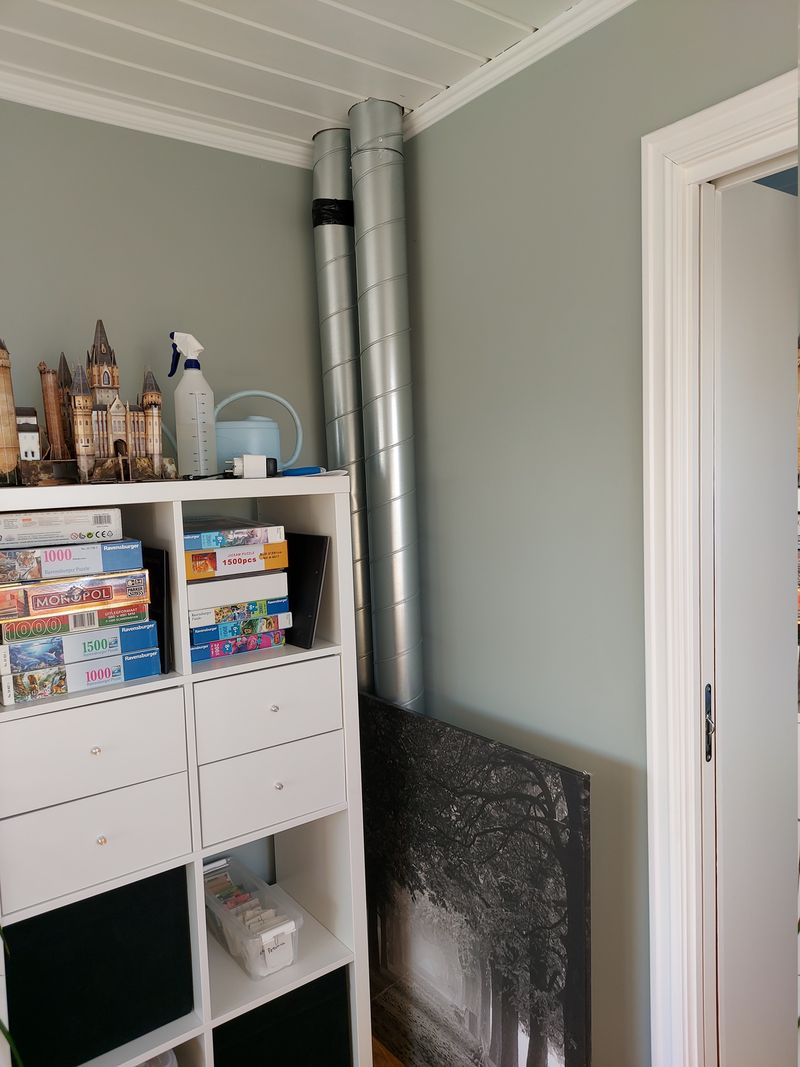
Two ducts running through the 2nd floor den, we will box those in as well. We’re happy with how little usable wall space we lost because of this 🙂
Airflow
After the additional ducts were installed, the airflow and distribution needed to be readjusted.
- Fans
- Supply: 50% -> 52%
- Exhaust: 50% -> 72%
- Air supply
- Kids’ room 1: 47 m³/h
- Kids’ room 2: 25 m³/h
- 2nd floor den: 25 m³/h
- Master bedroom: 52 m³/h
- 1st floor living room: 51 m³/h
- 1st floor play room: 28 m³/h
- Exhaust air
- 2nd floor hallway: 92 m³/h
- Bathroom: 58 m³/h
- 1st floor laundry room: 75 m³/h
The large increase in the exhaust fan speed is due to the increased duct pressure caused by the new run. Even though the percent values for the supply and exhaust air fans differ, the air flow in m²/h is about the same — as they need to be in a balanced ventilation system.
There are regulations for the volume of supply and exhaust air required:
- Bedrooms: 26 m³/h per bed space
- Bathrooms: 54 to 108 m³/h
- Laundry rooms: 36 to 72 m³/h
- Entire house: 1.2 m³/h/m²
We chose to have a high airflow in the laundry room, to prevent the window fogging up when drying lots of clothes.
The new “balance” between supply and exhaust means I have to make some adjustments to the other ventilation modes as well (away, cooking, fireplace, and intensive).
Home Assistant
We used to have a dehumidifier in the laundry room, to help speed up the clothes drying — and prevent the room, and window from fogging up too much because of the humidity. We removed that when the ventilation exhaust was installed.
So, now that the balanced ventilation system is also used to dry clothes — I had to change a few things in my Home Assistant setup. Previously, the ventilation was set to away mode when the alarm system was armed away. But this isn’t ideal if there are lots of wet clothes drying.
I made a sensor template to calculate the humidity difference in the laundry room — compared to the living room and play room. If there is less than 5% difference, then the clothes are pretty dry (probably).
Sensors
template:
- sensor:
- name: "Laundry room humidity diff"
state: "{{ ((states('sensor.laundry_room_humidity') | float) - (((states('sensor.netatmo_stue_humidity') | float) + (states('sensor.play_room_humidity') | float)) / 2)) | round(2) }}"
unit_of_measurement: "%"
device_class: "humidity"
- binary_sensor:
- name: "Probably drying clothes"
state: "{{ states.sensor.laundry_room_humidity_diff.state | float > 5 }}"
device_class: "moisture"
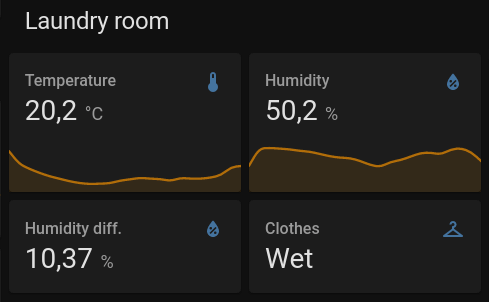

Looking at the graph above — it’s quite visible when clothes were hung to dry; there is a sharp increase in the humidity difference. And it slowly flattens as the clothes are drying.
Automation
I added the binary sensor “Probably drying clothes” into my alarm/ventilation automation:
- id: '1637912692246'
alias: 'Alarm, ventilation Away'
trigger:
- platform: state
entity_id: alarm_control_panel.rpi_alarm
to: armed_away
condition:
- condition: state
entity_id: sensor.komfovent_mode
state: '2'
- condition: state
entity_id: binary_sensor.probably_drying_clothes
state: 'off'
action:
- service: script.komfovent_set_away
data: {}
mode: single
So now, the ventilation is only set to away mode — if clothes are probably not drying 🙂
